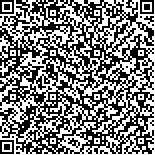| 摘要: |
| 1995年5月–1996年1月,在胶州湾北部软底水域进行每2月一次的调查。结果表明,小型底栖生物的年平均丰度为1.51×106ind/m2,最高值出现在95B1和95B2站,分别为2.73×106和2.75×106ind/m2,最低值出现在95B3站,数量为0.46×106ind/m2。小型底栖生物的年平均生物量为1.32g/m2 (干重)。皮尔逊相关分析表明,小型生物的数量与以碳和氮表示的浮游植物的生物量呈负相关,相关系数分别为-0.969和-0.947(P<0.05)。共鉴定出14个小型生物类群。自由生活的海洋线虫占总数量的86.6%,底栖桡足类居第2位,占总数量的5.7%。按生物量,海洋线虫(35.9%)、介形类(32.6%)、多毛类(13.7%)和桡足类(8.3%)共同构成小型动物的优势类群,80%以上的小型生物分布在0–2cm以浅表层内。与国内外同类研究结果进行了比较,并对小型生物在胶州湾生态系中的作用进行了探讨。 |
| 关键词: 小型底栖生物 自由生活海洋线虫 底栖桡足类 丰度 生物量 胶州湾 |
| DOI: |
| 分类号: |
| 基金项目:国家自然科学基金资助项目,497901001号,39770145号;教育部高等学校博士学科点专项科研基金资助项目,97042306号 |
附件 |
|
| ABUNDANCE AND BIOMASS OF THE BENTHIC MEIOFAUNA IN THE NORTHERN SOFT BOTTOM OF THE JIAOZHOU BAY |
|
ZHANG Zhi Nan1, ZHOU Hong2, YU Zi Shan1, HAN Jie1
|
|
1.College of Marine Life Science, Ocean University of Qingdao, Qingdao,266003;2.Department of Ecology and Biodiversity, University of Hong Kong, Hong Kong
|
| Abstract: |
| The benthic meio fauna was quantitatively investigated in the northern soft bottom of Jiaozhou Bay based on data collected from May 1995 to January 1996 bimonthly . The annual averaging meiofaunal abundance amounted to 1.51×106 ind/m2, with higher values of 2.73×106 and 2.75×106 ind/m2 at station 95B1 and 95B2 respectively, and the lowest value of 0.46×106ind/m2 at station 95B3. The maximum biomass of 1.90g/m2 (d. w.) and 1.87g/m2 (d. w.) were also found at stations 95B1 and 95B2. Meiofauna abundance varied seasonally in Jiaozhou Bay, with the highest abundance in late spring (May) and the lowest in summer (July). There was no significant variation of meiofauna biomass seasonally. It is suggested that the high value in May was attributable to excess food resources following the phytoplankton bloom in spring. Pearsonc’s Correlation Analysis showed negative correlation between meiofauna abundance and phytoplankton biomass in term of carbon and nitrogen (-0.969 and -0.947, P < 0.05).
The total of 14 meiofauna groups were identified. Free- living marine nematodes constituted 86.6% of the total abundance and 35.9% of the total biomass. Benthic copepods, ostracoda and polychaeta were also important groups by abundance and biomass. |
| Key words: Meiofauna, Free- living marine nematodes, Benthic copepoda, Abundance, Biomass, Jiaozhou Bay |
